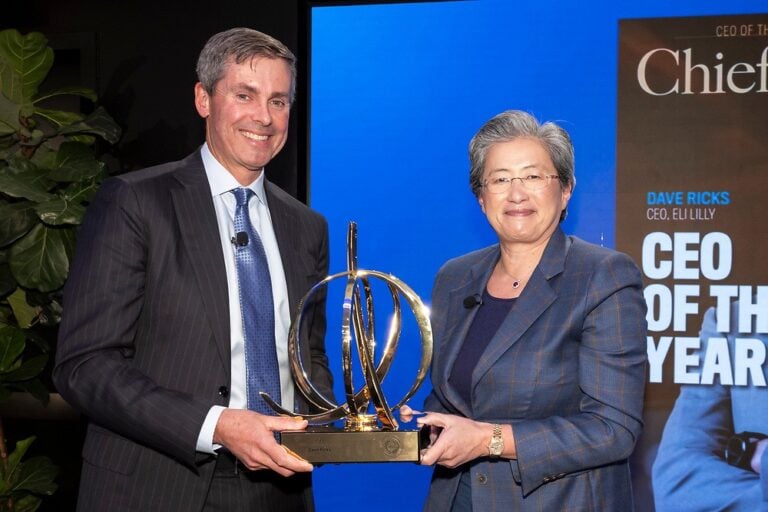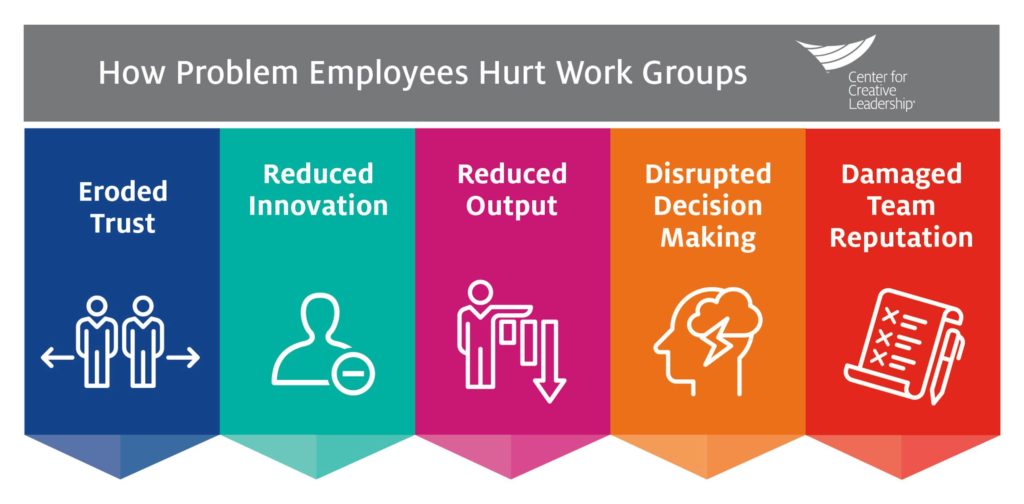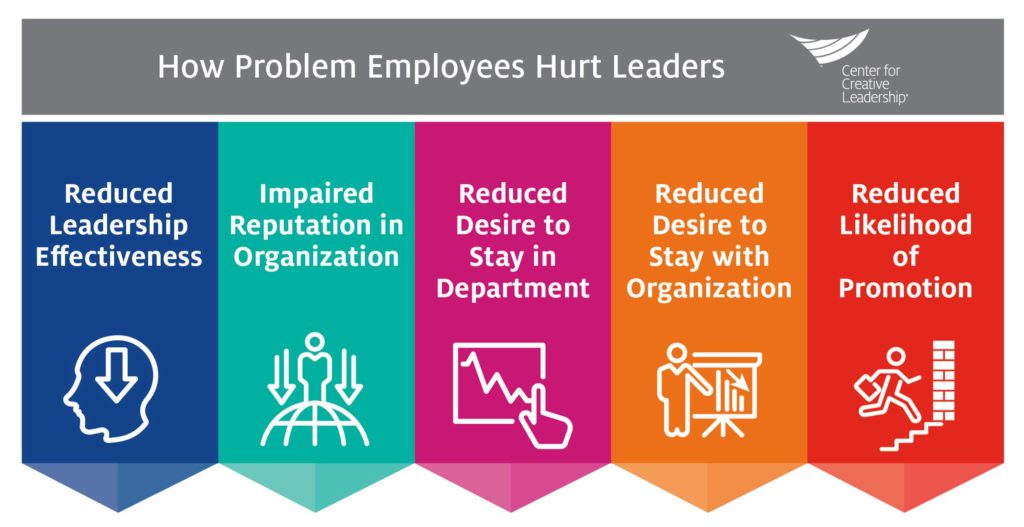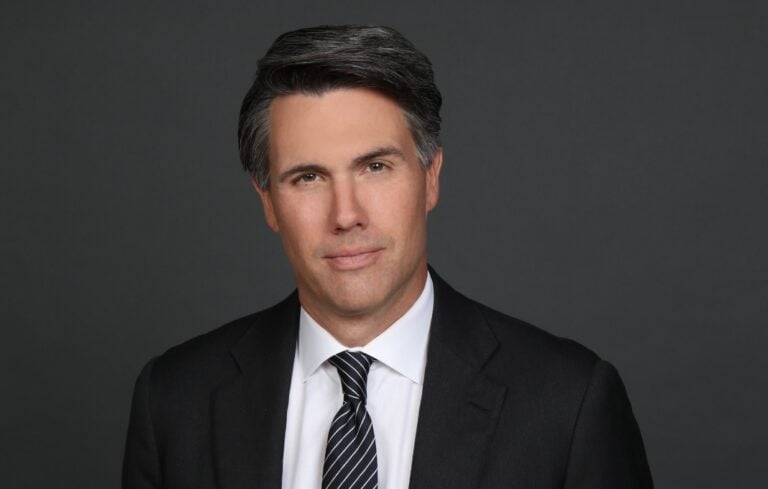
Do you have a problem person on your team? If so, you’re not alone. Every leader, regardless of level, seems to have stories about a “special” employee – perhaps someone who performs poorly, resists change, or just doesn’t work well with others.
But problem employees are more than a nuisance; they can be a real business liability. Research shows underperformers can reduce the motivation and effectiveness of an entire work group, costing organizations thousands of dollars a day.
And our own research shows that problem employees can negatively impact teams and torpedo the careers of those for whom they work.
 This image shows the ways in which problem employees negatively impacted aspects of their work group either to a “great” or a “very great” extent.
This image shows the ways in which problem employees negatively impacted aspects of their work group either to a “great” or a “very great” extent.
 This image shows the ways in which problem employees impacted them personally, either to a “great” or a “very great” extent.
This image shows the ways in which problem employees impacted them personally, either to a “great” or a “very great” extent.
In October, former Google Talent Chief Laszlo Bock will keynote Chief Executive’s CEO Talent Summit at West Point, sharing exclusive insights into what makes great teams, and great leaders.
Click Here for event information.
So why do we tolerate these bad actors? The simple answer is that confronting them is something not many of us do well, whether we’re a front-line manager or a C-Suite executive. In fact, confronting problem employees ranks lowest among the 16 key leadership capabilities the Center for Creative Leadership (CCL) tracks in its extensive database of competency ratings for leaders around the globe.
The bottom line: It’s time for all leaders – regardless of level – to learn how to confront problem employees and do so effectively. CCL recommends a simple, three-step model for delivering feedback that is fact-based and judgment-free. The Situation-Behavior-Impact (SBI) focuses on referencing specific situations, behaviors and impacts in your communications.
For example: “During today’s financial results meeting (the situation), you interrupted me six times to challenge the information on my slides (the behavior). As a result, I didn’t have sufficient time to explain the strategies we’re going to use to improve next quarter’s results. I’m frustrated that I couldn’t accomplish what I set out to do since this important work needs to begin now (the impact).”
The model can be really effective once you’ve found your rhythm and especially when you adopt the following eight best practices:
Failing to confront problem employees does a disservice to the employee, your team and your career. As a chief executive, you are in a unique position to lead from the top and model the feedback behaviors you want your entire organization to adopt.
While we’ve yet to meet anyone who relishes the delicate task of confronting a problem person, it’s a skill everyone can learn. So review our best practices for feedback and cascade SBI discussions across your organization. You’ll be much closer to saying “problem solved.”
Related: Listening Drives Better Decision-Making



0

1:00 - 5:00 pm
Over 70% of Executives Surveyed Agree: Many Strategic Planning Efforts Lack Systematic Approach Tips for Enhancing Your Strategic Planning Process
Executives expressed frustration with their current strategic planning process. Issues include:
Steve Rutan and Denise Harrison have put together an afternoon workshop that will provide the tools you need to address these concerns. They have worked with hundreds of executives to develop a systematic approach that will enable your team to make better decisions during strategic planning. Steve and Denise will walk you through exercises for prioritizing your lists and steps that will reset and reinvigorate your process. This will be a hands-on workshop that will enable you to think about your business as you use the tools that are being presented. If you are ready for a Strategic Planning tune-up, select this workshop in your registration form. The additional fee of $695 will be added to your total.

2:00 - 5:00 pm
Female leaders face the same issues all leaders do, but they often face additional challenges too. In this peer session, we will facilitate a discussion of best practices and how to overcome common barriers to help women leaders be more effective within and outside their organizations.
Limited space available.

10:30 - 5:00 pm
General’s Retreat at Hermitage Golf Course
Sponsored by UBS
General’s Retreat, built in 1986 with architect Gary Roger Baird, has been voted the “Best Golf Course in Nashville” and is a “must play” when visiting the Nashville, Tennessee area. With the beautiful setting along the Cumberland River, golfers of all capabilities will thoroughly enjoy the golf, scenery and hospitality.
The golf outing fee includes transportation to and from the hotel, greens/cart fees, use of practice facilities, and boxed lunch. The bus will leave the hotel at 10:30 am for a noon shotgun start and return to the hotel after the cocktail reception following the completion of the round.